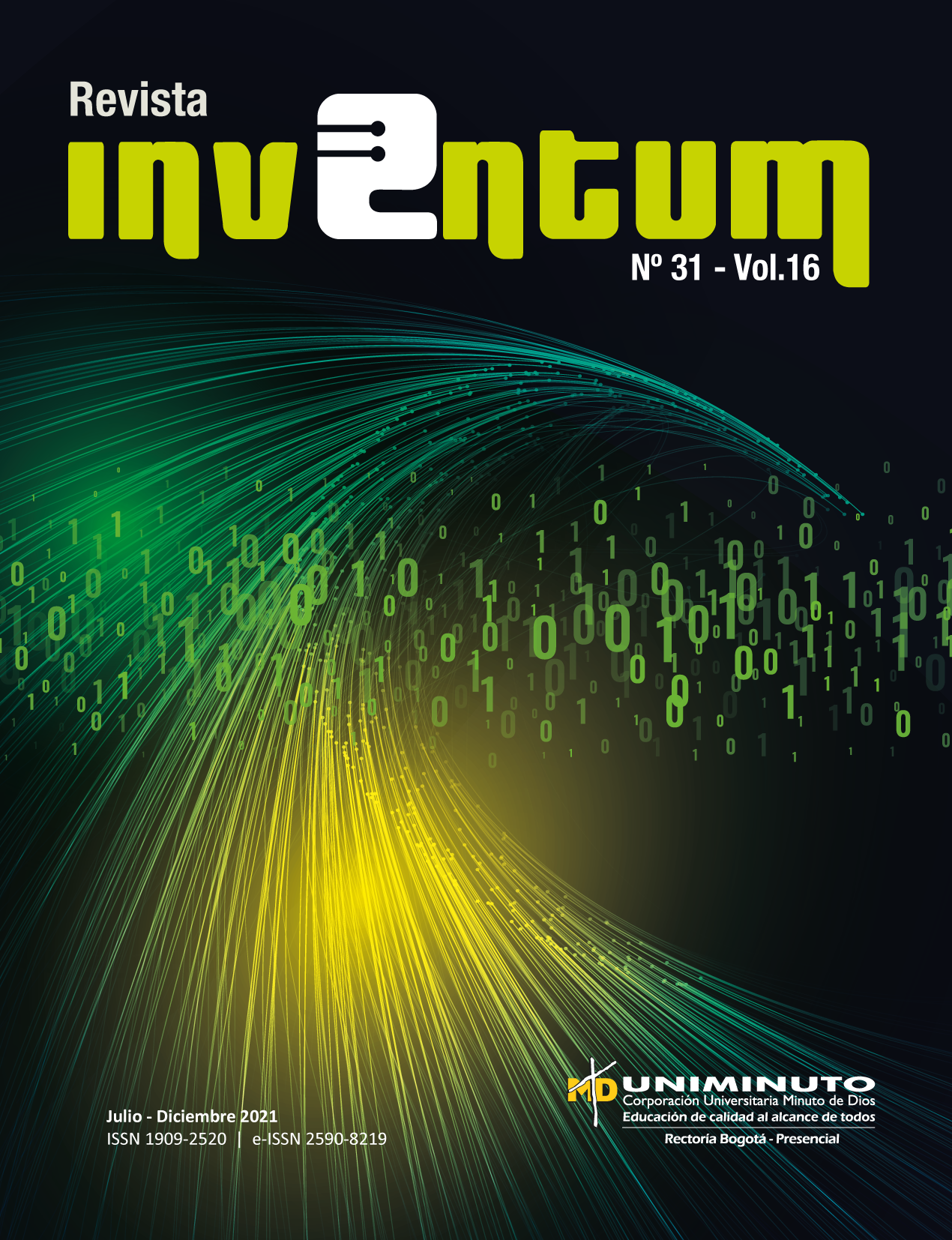Modelo de aprendizaje automático como herramienta para la toma de decisiones en la cuenca del río Ariporo
Barra lateral del artículo
Cómo citar
Altmetrics
Detalles del artículo
Se solicita a los autores que diligencien el documento de cesión de derechos de autor sobre el artículo, para que sea posible su edición, publicación y distribución en cualquier medio y modalidad: medios electrónicos, CD ROM, impresos o cualquier otra forma, con fines exclusivamente científicos, educativos y culturales
- La obra pertenece a UNIMINUTO.
- Dada la naturaleza de UNIMINUTO como Institución de Educación Superior, con un modelo universitario innovador para ofrecer Educación de alta calidad, de fácil acceso, integral y flexible; para formar profesionales altamente competentes, éticamente responsables y líderes de procesos de transformación social, EL CEDENTE ha decidido ceder los derechos patrimoniales de su OBRA, que adelante se detalla para que sea explotado por ésta
- El querer de EL CEDENTE es ceder a título gratuito los derechos patrimoniales de la OBRA a UNIMINUTO con fines académicos.
Contenido principal del artículo
Resumen
La cuenca del río Ariporo se encuentra localizada al oriente país, en el departamento del Casanare donde se han presentado desastres ecológicos como una alta mortandad de animales, ejemplo de ello, la sucedida en el año 2014 ocasionada por una fuerte sequía registrada en los medios de comunicación. De acuerdo con lo anterior, se ha elaborado un diseño metodológico en tres fases relacionadas a continuación: Diagnóstico hidrológico de la cuenca utilizando data science y sensores remotos, elaboración de un modelo matemático utilizando un balance de materia con la finalidad de visualizar la dinámica entre la lluvia y los datos de caudal de la estación del (IDEAM), y finalmente, recomendar estrategias frente al uso de suelo para la cuenca de acuerdo a la información recolectada.
Al obtener en el piloto, se puede notar como el aporte de agua subterránea es indispensable en la temporada de sequía, por lo que se concluye que la infiltración de agua lluvia en la temporada de excesos para los meses de abril, mayo, junio, agosto con el fin de que los acuíferos se recarguen para aportar agua al rio en la temporada de sequía en el periodo correspondiente a noviembre, diciembre, enero, febrero y marzo, donde se hace indispensable el uso del suelo en la planeación de la región, lo cual requiere de la deforestación para establecer pasturas para ganadería a través de estrategias de producción, y de igual modo, el aprovechamiento de los embalses como áreas estratégicas para maximizar la infiltración de agua lluvia en los acuíferos.
Referencias
[2] S. H. Corredor Jiménez, «Revisión y comparación del índice de fragmentación de coberturas naturales para cuatro cuencas hidrográficas en estudio», trabajo de grado, Universidad Distrital Francisco José de Caldas, Bogotá D. C, Colombia, 2019. [En línea]. Disponible: http://hdl.handle.net/11349/22764
[3] «Reporte de avance del Estudio Nacional del Agua ENA 2018», Instituto de Hidrología, Meteorología y Estudios Ambientales (IDEAM), Bogotá D. C., Colombia, nov. 2018.
[4] A. Sharma y V. Vijayakumar, «Predictive Analytics In Weather Forecasting Using Machine Learning Algorithms», EAI Endorsed Transactions on Cloud Systems, vol. 5, n.o 14, pp. 1-4, ene. 2019, doi: 10.4108/eai.7-12-2018.159405.
[5] R. Digna, M. Castro-Gama, P. van der Zaag, Y. Mohamed, G. Corzo, and S. Uhlenbrook, «Optimal Operation of the Eastern Nile System Using Genetic Algorithm, and Benefits Distribution of Water Resources Development», Water, vol. 10, no. 7, p. 921, Jul. 2018, doi: 10.3390/w10070921.
[6] M. H. Le, G. C. Perez, D. Solomatine, y L. B. Nguyen, «Meteorological Drought Forecasting Based on Climate Signals Using Artificial Neural Network – A Case Study in Khanhhoa Province Vietnam», Procedia Engineering, vol. 154, pp. 1169-1169-1175, ene. 2016, doi: 10.1016/j.proeng.2016.07.528.
[7] J. C. Ramírez Barreto, G. A. Ramírez Feo, y G. A. Forero Buitrago, «Propuesta de almacenamiento de agua lluvia para suministrarla al municipio de Albán utilizando HEC-GeoHMS», Revista Avances: Investigación en Ingeniería, vol. 17, n.o 1, pp. 1-1-25, ene. 2020, doi: 10.18041/1794-4953/avances.1.6031.
[8] E. D. Velásquez García, G. A. Forero Buitrago y G. P. González Angarita, «Simulación hidrológica para
sistemas de drenaje sostenible aplicada en jardines verticales en el humedal La Vaca, Bogotá D. C.», Inventum. Ingenieria, Tecnologia e Investigacion, vol. 15, n.o 28, pp. 88-103, ene. 2020, doi: 10.26620/ uniminuto.inventum.15.28.2020.88-103..
[9] D. A. Rozo Gómez, L. C. Velásquez Osorio y G. A. Forero Buitrago, «Simulación Computacional hidrológica del Río Cali en la escala temporal 2011-2019». Revista de Tecnología, vol. 17, n.o 28, pp. 83-91, 2018. doi: 10.18270/rt.v17i2.3334.
[10] C. A. Machado (2013). Ingeniería de la investigación, 4.a ed. Bogotá, Colombia: Universidad El Bosque,
2013.
[11] G. A. Forero Buitrago, «Integrated farming system for the foothill-regions of Colombia–Ariporo System (AS)». Revista de Tecnología, vol. 12, n.o 2, pp. 24-34, 2013. doi: 10.18270/rt.v12i2.697.
[12] POMCA, «Formulación del Plan de Ordenación y Manejo de la Cuenca del Río Ariporo Código 3601: Informe consolidación y estructuración del documento Plan de Ordenamiento y Manejo de Cuenca Hidrográfica», Corporación Autónoma Regional de la Orinoquía, Colombia, 2015.
[13] D. A. Romero Rubiano. «Aprovechamiento de aguas superficiales para mini-distrito de riego en la vereda «Labrancitas», en Paz de Ariporo, Casanare», trabajo de grado, Universidad Santo Tomás, Bogotá, Colombia, 2017. [En línea]. Disponible: http://hdl.handle.net/11634/4567
[14] C. D. Guerrero, D. Herrera-Rodríguez, y G. A. Forero Buitrago, «Hidrología e hidráulica computacional aplicada al suministro de agua lluvia de la vereda el Tunal en Paipa, Boyacá Colombia», inycomp, vol. 23, n.º 2, p. e2019502, jul. 2021. doi: 10.25100/ iyc.v23i2.9502
Artículos más leídos del mismo autor/a
- Edward Daniel Velásquez García, Gonzalo Alberto Forero Buitrago, Gina Paola González Angarita, Simulación hidrológica para sistemas de drenaje sostenible aplicada en jardines verticales en el humedal La Vaca, Bogotá D.C. , INVENTUM: Vol. 15 Núm. 28 (2020): ENERO-JUNIO





